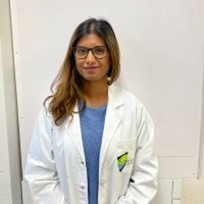

Antioxidative and anticancer potential of phytochemicals in Australian plants, TropAg
October 11, 2022
The Crawford Fund’s Queensland Committee has again partnered with the TropAg International Agriculture Conference to assist 10 young researchers from developing countries attend and present their science at this international conference which will be held in Brisbane from 31 October to 02 November 2022.
Successful candidates were chosen by a selection panel made up of representatives of The Crawford Fund and the TropAg conference organisers, based on submitted abstracts of their research.
In the lead-up to the conference we will be publishing short blog posts written by the young researchers about their work. Here is the first blog.
By Janice Mani, Central Queensland University
 I am honoured to be a recipient of the Crawford Fund Scholarship to present our work on behalf of my research team at the TropAg2022 annual conference. I am currently a 3rd year PhD student at the Central Queensland University, Australia.
I am honoured to be a recipient of the Crawford Fund Scholarship to present our work on behalf of my research team at the TropAg2022 annual conference. I am currently a 3rd year PhD student at the Central Queensland University, Australia.
My thesis title is: “Antioxidative and anticancer potential of phytochemicals in Australian plants”. I have a Bachelor of Science majoring in Biology and Chemistry and a Masters degree in Chemistry from the University of the South Pacific, Fiji.
My research team comprises of individuals who are experts in the field of crop science, and we are heavily involved in exploring bioactive compounds in crops and functional foods for sustainable food systems.
Our research goals mostly involve investigating polyphenols and phenolic compounds in crops and functional foods which give added health properties. Finding means of enhancing these properties in crops to increase its commercial value is paramount due to a rise in noncommunicable diseases such as cancer, obesity, cardiovascular diseases etc. Additionally, several crops by products such as mill mud may potentially hold high nutrient value which may be used as natural soil remediation or as fertilizers. Moreover, agricultural wastes such as stalks, stems, husks, leaves, seedpods, etc., due to its phytochemical and nutrient content it has the potential to be used as feedstocks, food additive or sources for harnessing bioactive compounds, proteins, or nutrients.
For instance, our previous work demonstrated that the chickpea hull by-product typically contained a higher total phenolic content (TPC) (56–150 mg gallic acid equivalents/100 g) and ferric reducing antioxidant power (FRAP) (38–174 mg Trolox equivalents /100 g) and the kernel contained TPC of 65–105 mg GAE/100 g and FRAP of 44–62 mg TE/100 g (Johnson et al. 2021). Hence the high antioxidant and phenolic content found in chickpea hull and husk by-products may be exploited in value-added products for human or animal consumption.
Apart from this our research goals also includes introducing analytical techniques such as near infrared and mid-infrared spectroscopy to detect both the presence of targeted and bioactive compounds in more plant matrices (Johnson 2020). This non-invasive prediction of antioxidant and phenolic content in plant matrices will allow a more rapid and economical screening of crops and ideal varieties which show elevated levels of phenolic acids, which may be associated with increased health benefits.




